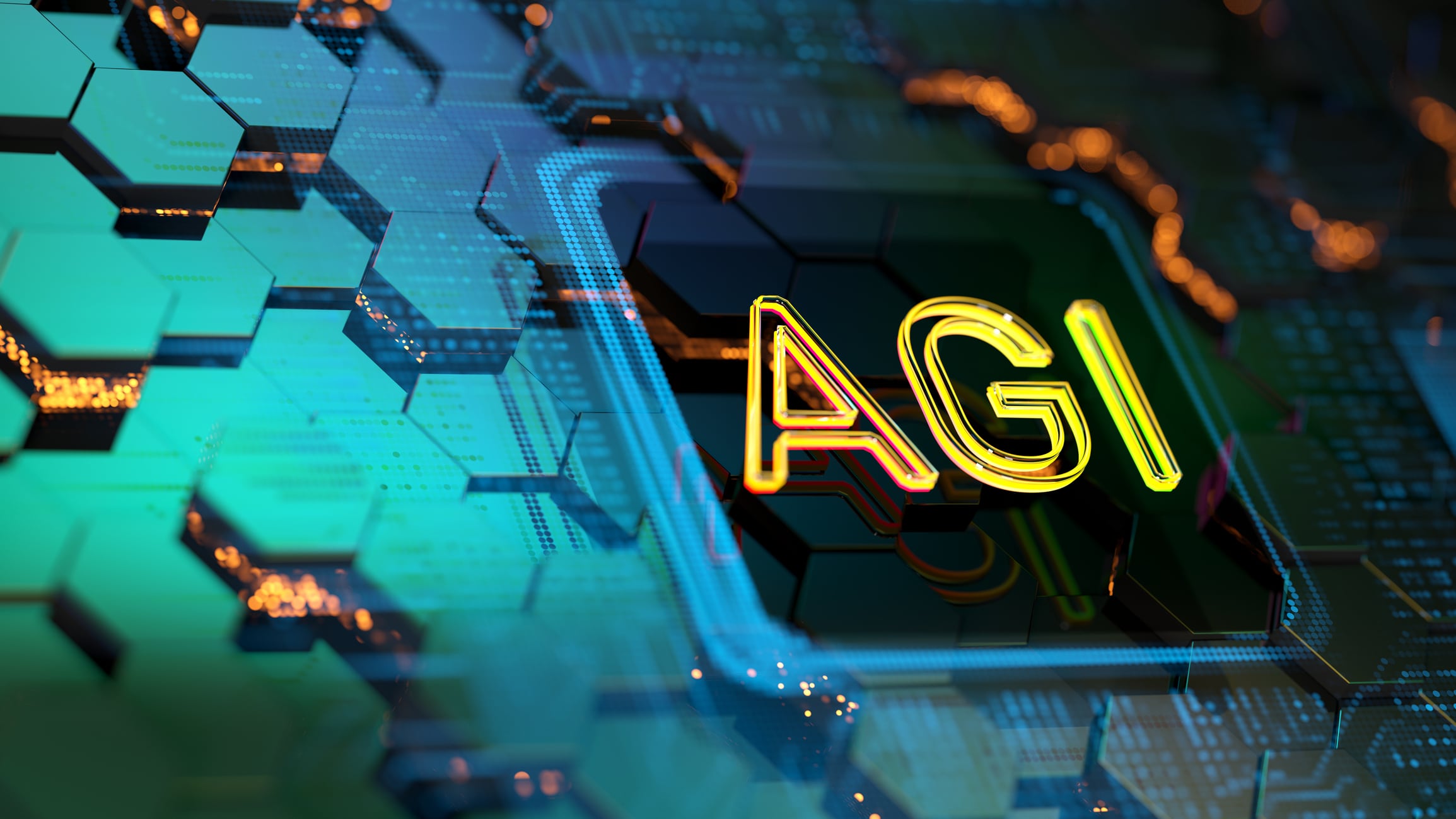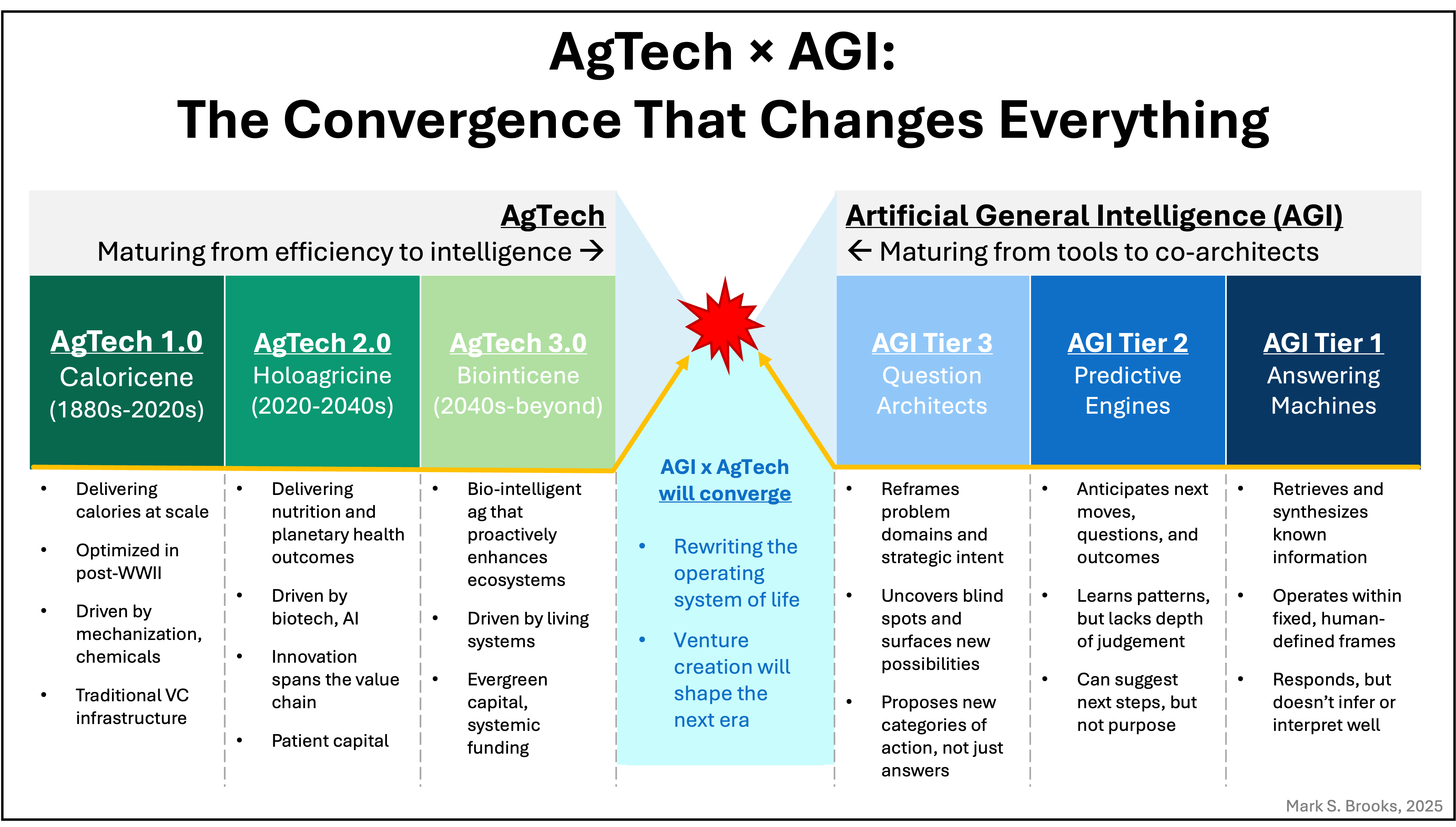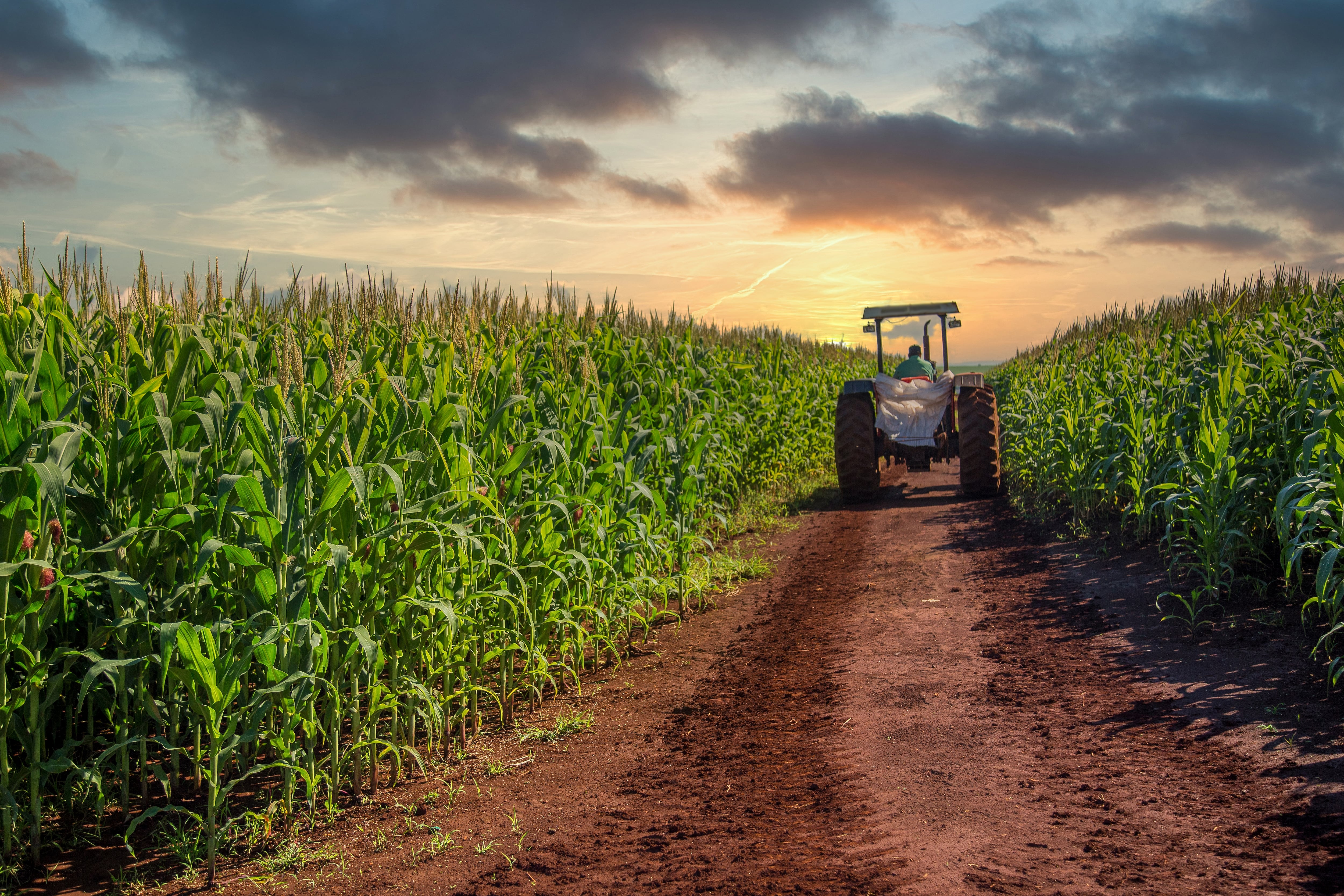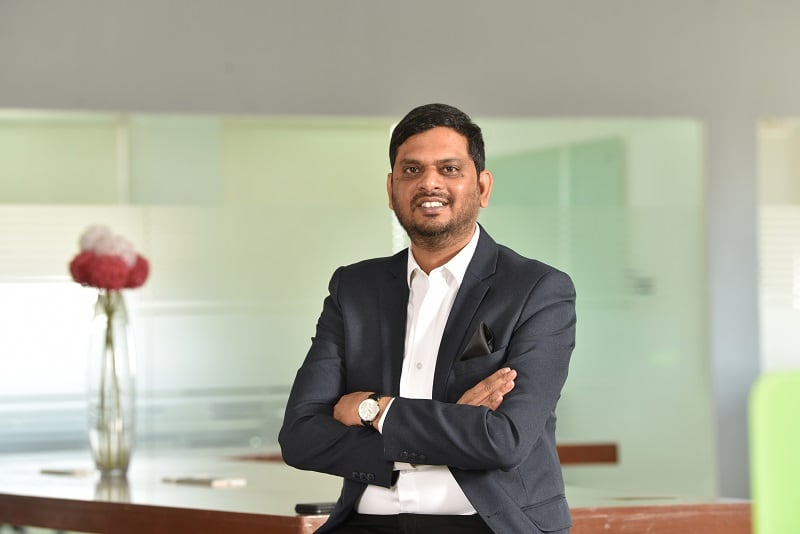Nobody asks if you’re using email anymore. Soon, nobody will ask if you’re using AI. And just as agriculture once shifted from oxen to tractors, then from tractors to biotech, the next leap is coming. It won’t be in horsepower or yield, but in intelligence.
This is the convergence of AGI and agtech. And it will rewrite the operating system of life.
Agriculture and intelligence are on a collision course
Ag and AI have both been moving toward big changes. One reshaped how we feed billions. The other is changing how we think. Now they’re headed straight for each other.
For a long time, agriculture was about scale. More acres. More calories. More inputs. That worked, until it didn’t. The industrial model that once fed the world is now showing its cracks: degraded soils, climate stress, fragile supply chains, poor grower profitability.
At the same time, AI grew up. It started as a novelty. Now it’s part of daily life. But the real shift isn’t speed or automation. It’s what happens when intelligence stops being a tool and starts helping us rethink the systems we depend on. It may change what we decide to build in the first place.
A quick recap: The evolution of agtech
I have described three broad eras of agtech:
- Agtech 1.0: Scale and mechanisation. The age of abundance. High output, low resilience. Focused on calories.
- Agtech 2.0: A shift toward nutrition, sustainability, and data. We started asking not just how much, but how well. Nutrient density, emissions, soil health. Innovation spread across the value chain. We’re in this era now.
- Agtech 3.0: The next chapter. Agriculture as a living, adaptive system. Less control. More collaboration with biology. We won’t just manage farms, we’ll re-program ecosystems. Self-optimizing, ecological infrastructure. It could even change what we mean by “agriculture”.
Each shift has changed how we define progress and what it takes to get there. Now, artificial intelligence is about to intersect that path.
The three tiers of AGI
As agtech has evolved, so has AI on its own ladder of development:
- AGI Tier 1: Answering MachinesMost AI today lives here. It summarizes, retrieves, and responds. Think search engines and copilots. Useful, but limited. It can’t think beyond the frames we give it.
- AGI Tier 2: Predictive EnginesThis level spots patterns and runs scenarios. It can suggest what might happen next. But it still doesn’t understand what really matters. It’s clever, sometimes helpful, sometimes narrow. But it’s more of a collaborator now rather than just a tool.
- AGI Tier 3: Question ArchitectsThis is the real frontier. AGI that doesn’t just give answers, it asks better questions. It reframes problems, uncovers blind spots, and opens whole new directions. Think of it as the co-founder you didn’t know you needed. It doesn’t replace judgment but rather sharpens it. It doesn’t just help you do things better; it helps you figure out what’s worth doing.
This framing lines up with the AGI “Levels” models from DeepMind and OpenAI, which show the path from narrow tools to generalist, autonomous problem-setters.
We’re not at Tier 3 yet, but the road is in view. And when we get there, the field will be a system we design.

The collision point: AGI x agtech
Most people still think of AI in agriculture as automation. Smarter sprayers. Better crop scouting. Drones, sensors, apps. Maybe a bit of mapping genes. That’s helpful, but it’s Tier 1 thinking for agtech 2.0 problems.
The real leap happens at Tier 3. That’s when farming stops being a checklist and starts becoming a system we can reimagine.
AGI won’t just suggest what crop to plant. It might challenge the very idea of a “crop”. It won’t just calculate fertiliser rates. It might propose entire biological relationships that make inputs unnecessary.
The real shift isn’t in the tools we use, but in the questions we start with. Instead of asking how to grow more, we can ask what outcomes actually matter. AGI lets us design farming and food systems that aim for goals like healthier soils, stronger ecosystems, and food that nourishes people and planet alike.
This isn’t science fiction. It’s what happens when two deep, long-term trends finally meet. What cloud computing did for software, this convergence will do for biology. It will open the door to new ventures, new collaborations, and new ways of thinking about living systems.

The takeaway: rewriting the operating system of life
The role of risk capital isn’t to fund better tractors or slicker software. It’s to back the unconventional, early-stage bets that shift systems when intelligence and biology start building together. Capital needs to stop chasing yield and start backing imagination. The future will belong to those who fund the implausible, before it becomes the inevitable, at the ag x AGI intersection.
Failed imagination is our biggest risk. If everyone had access to a data center of geniuses, the real bottleneck wouldn’t be knowledge or expertise. It would be imagination, the quality of their questions, and the appetite to re-design systems. Too many are still thinking in straight lines as if the future will just be a bit faster or shinier. But what if it’s not? What if the real shift is conceptual, and we’re not thinking big enough to recognize it?
That changes what gets built and who builds it. It also forces new questions about power, ethics, and agency. Who defines value? What does progress mean in a biointelligent future? How do we fund, govern, and evolve systems that stretch beyond human comprehension?
Maybe by asking those questions – alongside AGI – we help it reach Tier 3, just as it helps us mature into AgTech 3.0.
When AGI meets agtech, we’re not just improving crops. We’re rewriting the operating system of life. And the real question is: who is holding the pen? Because what we write next could shape the biological age to come.
--
Mark S. Brooks is a strategist and corporate ventures leader with deep experience across agtech, biotech, climate, and entrepreneurship. A former academic climate scientist, he has deployed over $75 million in venture capital globally, served on start-up boards across five continents, led FMC Ventures, invested at Syngenta Ventures, and founded an agtech start-up.
Author’s note: I believe allocating risk capital is one of the most powerful levers we have to shape entire industries. I’m currently exploring senior roles leading corporate innovation, venture investing, or ecosystem strategy inside science-driven companies. At my core, I’m a capital allocator – backing the right ideas, at the right time, with the right partners to build what comes next.




